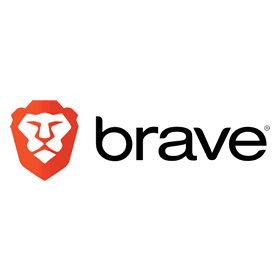According to research by Javelin Institute, identity theft increased by 8% in 2017. In total, fraudsters stole $16.8bn from 16.7 million consumers. And that’s just in the US.
As we do more online, the risk of identity theft increases. Think of all the times you paid online by credit card in the past month, or all the online forms you filled in, or any online banking you did.

Unless you take action to protect yourself, it might only be a matter of time before someone decides to exploit your personal information for their own gain. Examples could be opening credit cards in your name, submitting fake tax returns, or running up huge utility bills.
Thankfully, there are lots of ways to protect your identity so you stay safe online. One way of the most effective is by using a secure and private internet browser.

Popular brands like Chrome, Safari, and Internet Explorer contain security flaws, such as unsafe autofills, malicious extensions, and phishing vulnerabilities. If you want to protect yourself from identity theft, we therefore recommend a new browser that’s been designed to put your security and privacy first.
It’s called Brave.
Before we explain what Brave does, let’s dig a little deeper into what identity theft is and who is most at risk…
What is identity theft?
Experian, the consumer credit reporting agency, says this about identity theft:
“Identity theft occurs when someone uses your identity or personal information—such as your name, your driver’s license, or your Social Security number—without your permission to commit a crime or fraud.”
Online, this usually involves someone stealing your data and using it to defraud you. There are many types of identity fraud, but according to the Federal Trade Commission, the most popular is credit card fraud, closely followed by employment or tax fraud, and utilities fraud (see below).
Fraudsters use various methods to get their hands on your data. They might get hold of it physically (by raking through your trash, for example), but often, it’s easier to trick you into revealing personal information online. They don’t have to be physically near you, which makes online identity theft much less risky.
Here are some examples of how a fraudster might steal your identity online:
- Infecting your machine or browser with malware
- Spying on you through spyware, plugins, scripts, trackers, or unsecured internet connections
- Tricking you into using fake versions of legitimate websites (phishing)
- Data breaches
Who is at risk?
Anyone who reveals personal or sensitive information online, such as bank details, credit card numbers, medical records, Social Security Numbers, passport information, addresses, names, and lots more.
Children are increasingly becoming victims of identity theft, too. As they spend more time online, creating social media profiles and so on, they are easy targets for cybercriminals. Children care less about online security – might not even understand the concept – so it’s up to parents and responsible adults to ensure they’re also protected online.
How Brave protects your identity online
Brave protects your identity in two key areas.
First, it blocks all the malicious software that might steal sensitive information from you. It blocks all malware, spyware, malvertising, phishing, fingerprinting, plugins, and scripts. All of this protection is done in-browser – you don’t need to download any extensions.
Second, Brave upgrades websites to HTTPS – a more secure connection between you and the websites you visit. Whenever you see the locked padlock icon and HTTPS in the URL (address) bar, it means all the information you exchange with that website is encrypted. Again, you don’t need to install anything extra – the browser does this for you automatically.
And, since websites have to buy SSL certificates to authenticate their HTTPS connection, they’re a little harder to fake. Different SSL certificates demand different verification, ranging from proof of domain ownership to proving they’re a legitimate organisation. To check a site’s SSL certificate, click the padlock icon and you’ll be able to see what type they have and whether it’s valid.
Identity theft is a serious threat. Protect your identity online by downloading and installing Brave today. The cost of identity theft is high, but Brave is free – so what are you waiting for?


